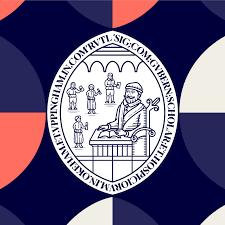SCIENCE MAGAZINE

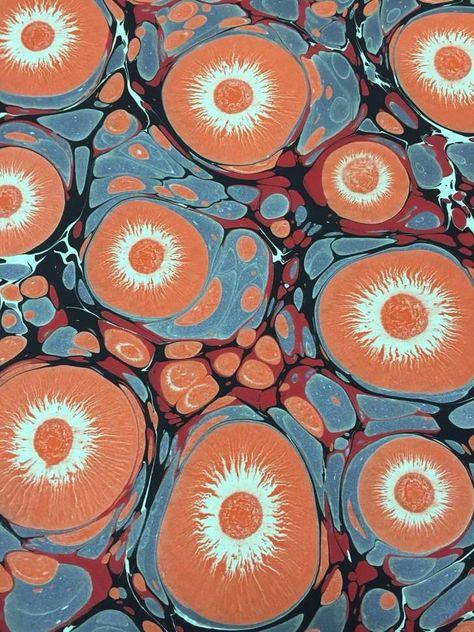
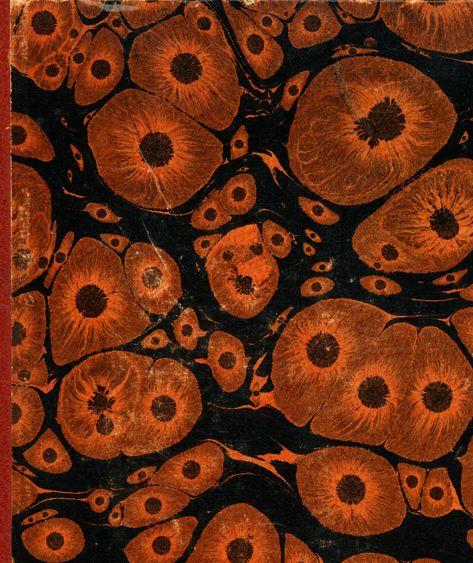

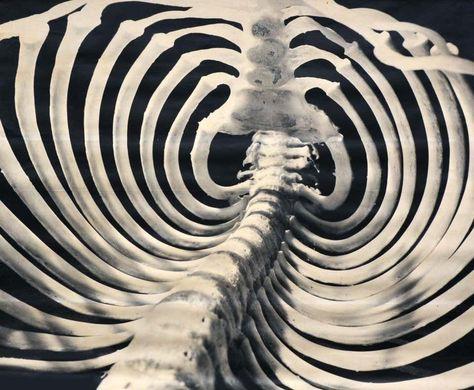
2 0 2 4 E d i t i o n UPPINGHAM Volume 1


spring 2024
Welcometothefirst editionofthe UppinghamScience Magazine!Weare excitedtosharewithyou adiverserangeoftopics wehavedelvedintothis year,covering everythingfromCRISPR totheexplorationof space.Wehopeyouwill beabletofind somethingthatinterests youandencouragesyou todelve deeperintothe worldofSTEM.


CONTENTS
PAGE1:CRISPR-CAS9:THEPOWEROFGENE MODIFICATION
PAGE2:INTERVIEWWITHDRPEMBERTON
PAGE3:RNASEQUENCEPUZZLE
PAGE4:BIOLOGYCLUBS
PAGE5:BIOLOGYCLUBS
PAGE6:ANIMALSANDBLUEBLOOD
PAGE7:NEWSCIENTIST&YSA
PAGE8:RESOURCES
PAGE9:INTERVIEWWITHDRDAWES
PAGE10:ALUMINIUM
PAGE11:THEDEVELOPMENTAND CHEMISTRYOFTHEGLOWSTICK
PAGE12:CROSSWORD
PAGE13:FUNSCIENCEFACTS
PAGE14: THESEARCHFORLIFEONEUROPA
PAGE15:WHYDOWEEXPLORESPACE
PAGE16:INTERVIEWWITHMRSELLIS
PAGE17:MICHAELFARADY
PAGE18:DRYICEPRACTICALS
PAGE19:LINUSPAULING
PAGE20:ALEXANDERFLEMING
PAGE21:READINGRECOMMENDATIONS
PAGE22:END
CRISPR-Cas9:ThePowerof GeneModification
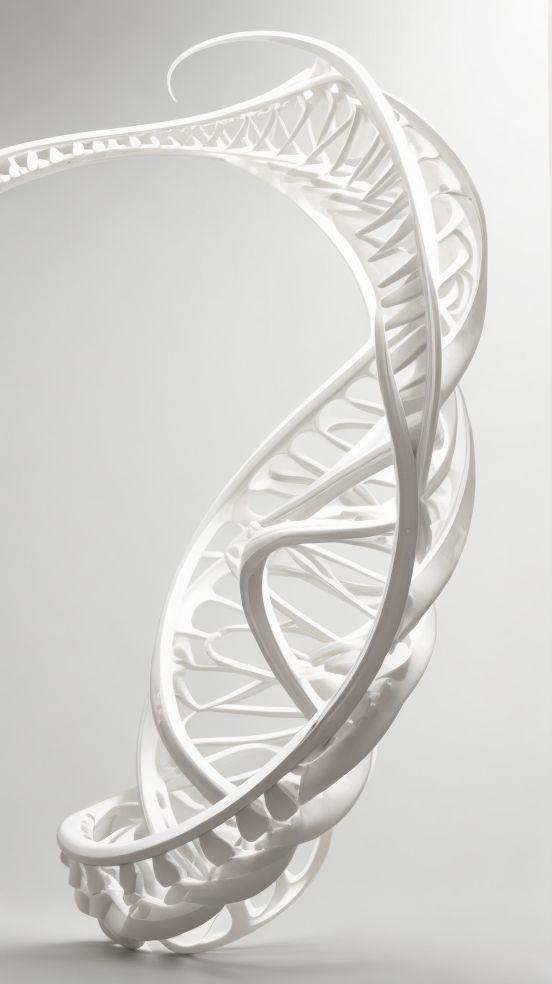
Inthedynamicrealmofgenetics,agroundbreakingtechnologyhasemerged,promisingtotransformthewaywe understandandmanipulatethebuildingblocksoflife-cells.CRISPR-Cas9,oftenlikenedtogenetic"scissors"or a"molecularscalpel,"hasopenedupunprecedentedpossibilitiesingeneticmodification.
CRISPR(whichstandsforClusteredRegularlyInterspacedShortPalindromicRepeats)wasinitiallydiscoveredaspartof thebacterialimmunesystem,especiallyinE.coli.Cas9isaproteinthatactsasscissors,cuttingtheDNAatspecific locationsundertheguidanceofRNAmolecules.
CRISPR-Cas9isverypreciseallowingresearchestotarget specificgeneswithaccuracychoosingtoadd,deleteor altergeneticmaterial.
Withinthefieldofmedicine,CRISPR-Cas9holdsthe promiseofcuringgeneticdiseases.Scientistsare currentlyexploringitspotentialincorrectingmutations responsiblefordisorderslikecysticfibrosisandsicklecell anaemia.Thetechnology'sabilitytopreciselyeditgenes offershopeformoreeffectiveandpersonalized treatments.
Ontheagriculturalfront,CRISPR-Cas9isrevolutionizing cropbreeding.Researcherscanenhancecropresistance topests,improvenutritionalcontentandalsoincrease yields.Thisinnovationmayplayacrucialrolein addressingglobalfoodsecuritychallengesandmitigating theimpactsofclimatechangeonagriculture.
However,despiteallitsadvantages,theethical considerationsloomlarge.Theabilitytomodifythe humangenomeraisesquestionsaboutunforeseen outcomesandtheprospectsforpotentialfordesigner babies.Inordertousegeneticmodificationtoitsfull potential,wemustalsonavigatetheseethical complexities.
CRISPR-Cas9has certainlycatapultedgenetic modificationintoanewera.Asscientistscontinueto unlockitspotential,societymustgrapplewiththeethical implicationsandestablishresponsibleguidelinesforits use.Whetherincuringdiseases,enhancingagriculture,or understandingtheintricaciesoflife,CRISPR-Cas9isa powerfultoolwithabigpartinourfuture.
PAGE
1
AzariahAlmeida
PAGE2

I f y o u c o u l d h a v e d i n n e r w i t h a n y b i o l o ig s t / s c i e n t i s t, w h o w o u l d i t b e a n d w h y ? S i r D a v i d A t t e n b o r o u g h, t h e r e n o w n e d b r o a d c a s t e r, b i o l o ig s t, n a t u r a l h i s t o r i a n a n d a u t h o r . H 'e s k n o w n f o r h i s g r o u n d b r e a k i n g d o c u m e n t a r i e s o n w i l d l i f e a n d n a t u r a l w o r l d . H e i s a l s o a n a d v o c a t e f o r e n v i r o n m e n t a l c o n s e r v a t i o n a n d i n s ip r e s m i l l i o n s t o a p p r e c i a t e a n d p r o t e c t s t h e lp a n e 't s b i o d i v e r s i ty . D r P b e l i e v e s h 'e d b e a n e n g a ig n g d i n n e r g u e s t w h o c o u l d e n t e r t a i n w i t h h i s m a n y s t o r i e s a b o u t t h e n a t u r a l w o r l d a n d " h 'e s r e a l ly c o o l " .

Int DrPemberton
WhatisyourfavouritepartofBiologytoteach?
DrPemberton'sfavouritepartstoteachinbiologyhavetodowiththeminiature.She studiedmicrobiologyandfindstopicsaboutbacteriaandvirusesinteresting.Shealso findsthemanipulationofcellsandgenesfascinating.
Whatbiologyrelatedbookdoyourecommend?
Sheiscurrentlyenjoying"TheGoodVirus",byTomIreland,anawardwinningscience journalist.Thebookexploreshowtheroleofvirusescouldbepositiveratherthannegative.DrP specificallyspokeaboutthereplacementofantibioticswithspecificvirusesthatkillbacteria.
WhatinspiredyoutostudyMolecularandMicrobiology?
Asastudent,DrPembertonplannedtoworkattheCDC(CentresforDiseaseControland Prevention)whereshewouldtravelintothecentreofepidemicsaroundtheworld,to discovertherootandsolutionoftheissue.Thisdidnotactuallyhappenandshefoundherself venturingintoareasintheworldofmicrobiology.However,thankstothepandemic,Dr PembertonhasbeenabletoliveoutsomeofherchildhooddreamhereinUppingham.
Lastly,whatisyourfavouriteorganelle?
DrPemberton'sfavouriteorganelleisthechloroplast.Theprocessofphotosynthesisisvitalitremovescarbondioxideandproducestheoxygenwebreath;itconvertssunlightinto energy;andproducestheenergy-richglucose.It'salso"greenandsoothing".
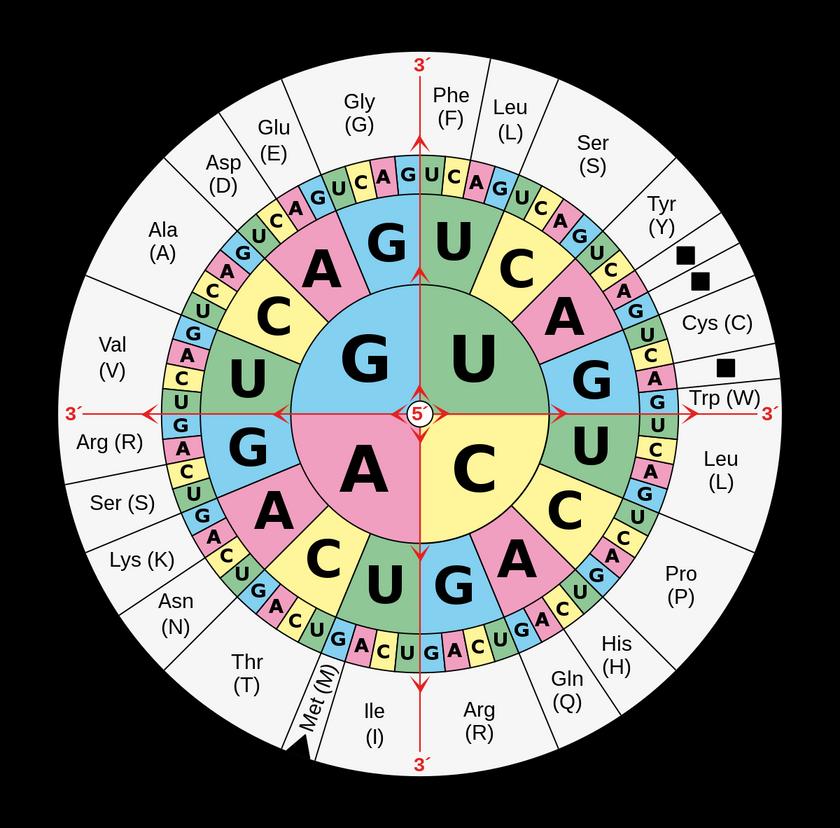
RNASEQUENCE PUZZLE
P A G E 3
ThisisaRNAsequencethathasbeenmadeduringtranscriptionfromaDNA sequence.Thelettersaresplitintogroupsofthree(calledcodons),thatarecodefor aspecificaminoacid.
Usingthecodonchart,findtheaminoacidsthatthesequencecodefor....theamino acidsshouldspelloutanamesimilartoafamousbiologist.

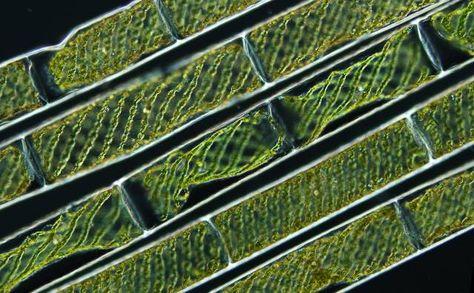
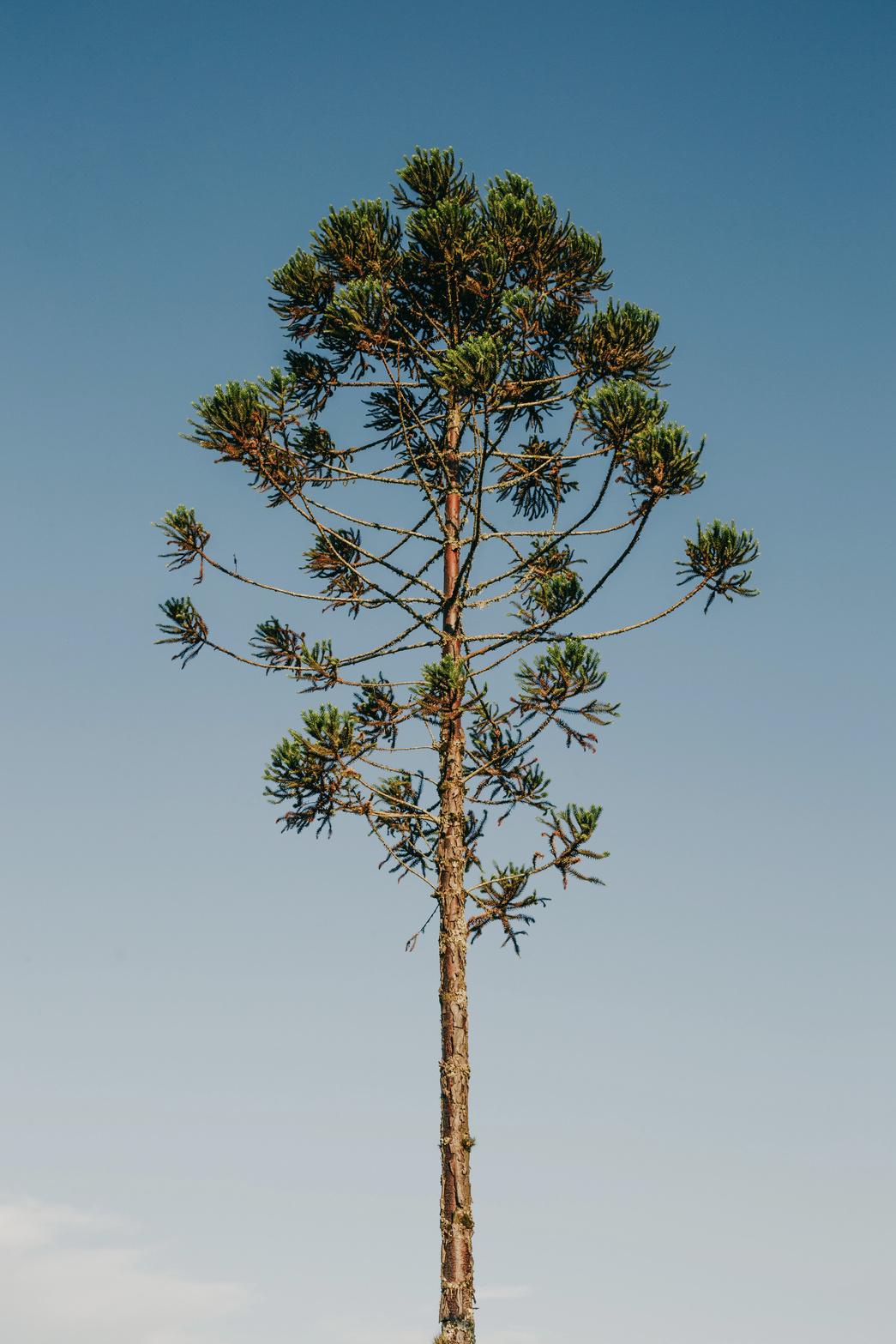
AnatomySociety
AtUppingham,AnatomySocietyprovidesahubofcuriosity andscientificexploration.Membersgatherbiweeklytodelve intotheintricaciesofvariousanimalsthroughdissections. Somerecentexplorationshavebeenintofrogs,rabbitsand pigeons.Notonlydoweworkonskillswiththescalpeland forcepsbutalsoothermedicalandscientifictechniqueslike suturing.

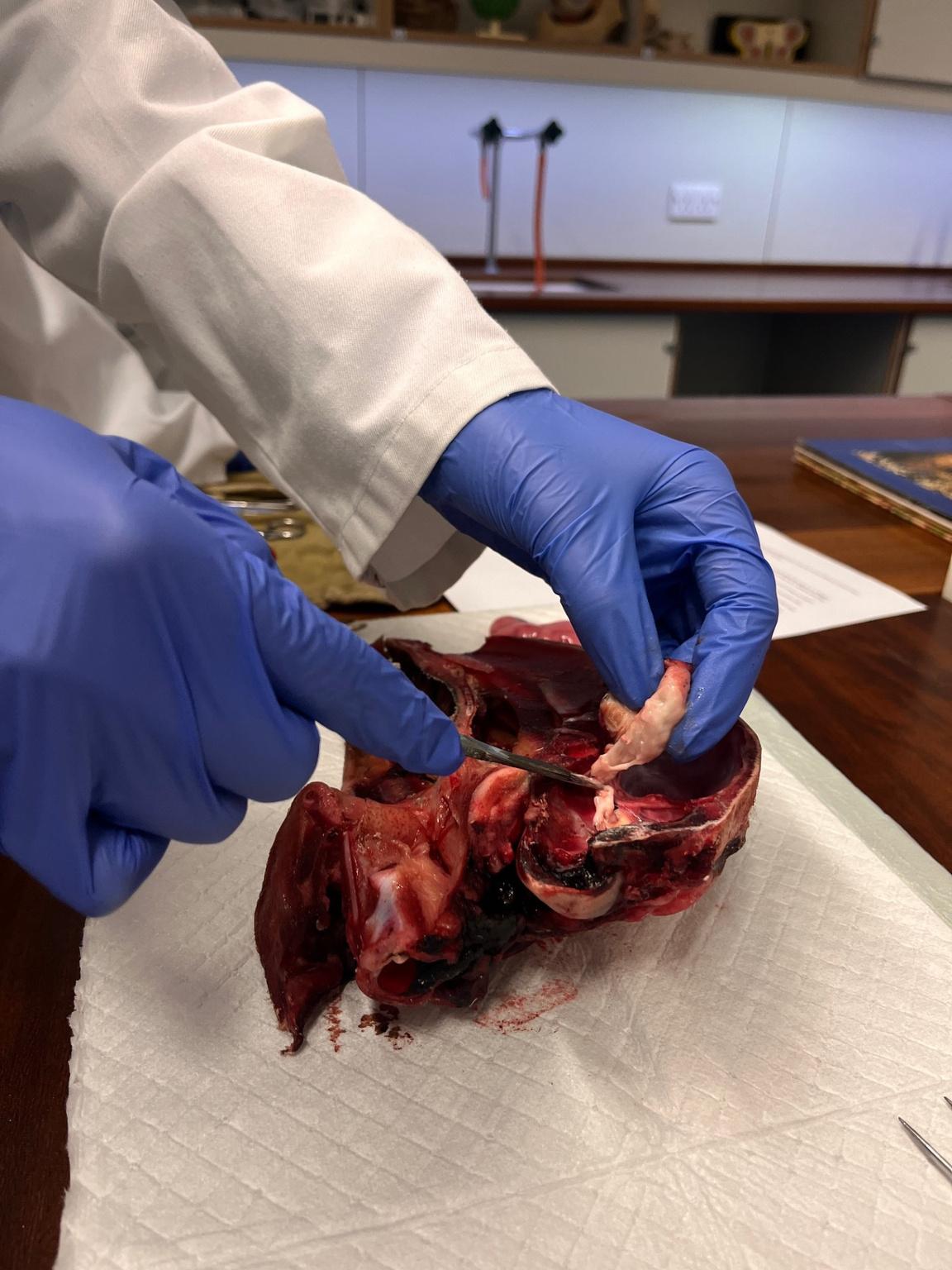

Wewereabletousemedicalsuturekitstolearnand practisedifferentmethods. Anatomysocietyprovideshands-onlearning experiencesandallowsmemberstodevelop valuableskillsinobservationandscientificenquiry.

FollowtheUppinghamAnatomy SocietyInstagramPage (uppingham.anatomy.society)
P A G E 4
BiologyClubs
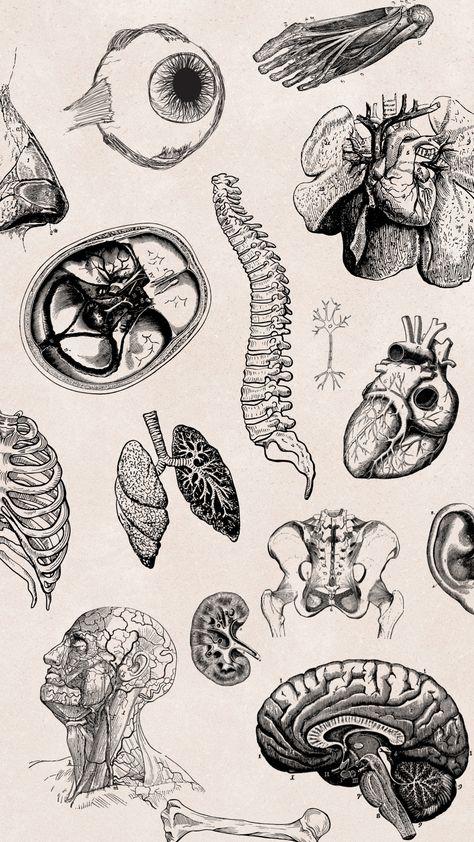
NeuroscienceClub
NeuroscienceClub
Theclubstartedthistermandwehavebeenlookingatavarietyoftopics. Initially,webeganlookingatapracticalinwhichwehadtotraceastaronly usingamirrorandwithoutbeingabletoseethepaperwearedrawingon. Thispracticaltestedstudentsabilitytolearnnewinformation. Wethen decided tofocusonthesubjectofmemoryandfamiliarisedourselveswith shortterm,longtermandworkingmemoryandtheprocesseswhichlink these together.Currently,weareworkingondistributingaleafletonthe historyofbrainsurgeryandhavemadeaTikTokaccount,inwhichweplan tofeatureaweeklyfactregardingneuroscienceamongotherposts.
FollowtheNeuroscienceTikTok Page (uppingham.neuroscience)

BiologyJournal
BiologyJournal
EveryFridayafternooninDrP’slab,wewouldlookatscientificarticlesfromjournalslikeCells,ScienceandNaturefor JournalClub.ThisFriday,wereadapaperabouthowgeneticscouldbeassociatedwithtail-lossevolutionand throughoutthisterm,we’velookedatotherthingsliketelomerasedisruptionleadingtoanti-tumourimmunity,coral breeding,multiplesclerosisbeingpositiveselectedduringevolution.JournalClubgivesusachancetoexploreexciting andmostofthetime,unexpecteddiscoveries,aswellastrainingourskillsfor analysinggraphsandinterpretinglongunfamiliarpassage.

MedicalSociety
MedicalSociety
MedicalSociety,orcommonlyknownasMedSoc,isaimedfor peoplewhoplantogostudyanyhealthcarerelatedcoursein universitysuchasmedicine,veterinaryordentistryandwemeet everytwoweeks.InMedSoc,welookattheissuesconcerningthe NHSandcommoninterviewquestionsthatareaskedwhenyouare applying.Thesocietyisagoodplacetopracticeimportantskillsina slightlylessformalenvironmentprovidingvaluableexperiencefor interviews.Theseskillsmightincludehavinggroupdiscussionson specialistsubjectsorputtingforwardyourviewsontopicssuchas assistedsuicideorwhethertheNHSshouldbeprivatised. Furthermore,howtobeststudyfortheUCATexamsarediscussedas wellashelpwithpersonalstatements.
PAGE5
...bloodisnotalwaysred
Some animals have BLUE BLOOD
Thishappensespeciallywhensomeanimalsareexposedtooxygen.Theseanimalsarelobsters,crabs, pillbugs,shrimp,octopus,crayfish,scallops,barnacles,snails,smallworms(exceptearthworms),clams, squid,slugs,mussels,horseshoecrabsandmostspiders.Alltheseanimalsareinvertebrates,however,not allinvertebrateshaveblueblood.Coppermetalinthebloodgivestheseanimalsthisstylishblueblood. Thechemicalthatmakesthebloodblueiscalledhemocyanin.
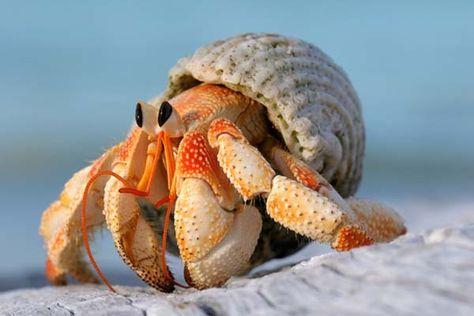
Apartfromblueandred,someanimalsevenhaveclearorwhitishblood.Theseanimals includetheicefish,whichhaveclearbloodbecausetheynolongerareabletomake redbloodcellsandhaemoglobin(whichcarryoxygenthroughitsbody).Thiswasfirst discoveredbyaNorwegianzoologistintheearly20thcentury.Mostinsectsalsohave clearorwhiteblood,aswellassomespeciesofsharks,hagfish,andlampreys.
Surprisingly,blue,redandwhitearen’ttheonlycoloursofbloodthatexistintheanimal kingdom.Somemarinewormshavegreenbloodduetotheiroxygentransportprotein; thiscolourisdeterminedbypigmentsfromtheirdiets.
Didyouknow...
PAGE6
AmeenaKereAhmed

NewScientistisawebsitethatcanbereallyuseful forfindingthelatestinformationaboutscientific newsandkeepingupwithnewfindingsaroundthe world.Ifyouwanttopursueanycareerinsciencein thefuture,itisimportantthatyoustayinformed abouthowscienceandtechnologyisbeingapplied andupdatedintheworldtoday.
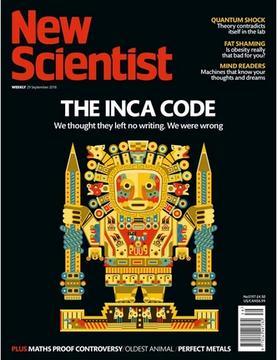




TheYouthSTEMMAwardisagreatway exploreyourpersonalinterestsin science. AtUppingham,theawardisrun byMrsEllis-so,ifyouhaveanyquestions abouttheawardmakesuretoemailher. Thereare4differentareasoftheaward: InspiringtheNextGeneration,Engaging thepublic,Developingyourskillsand knowledge,andShapingyourfuture. it isreallyusefulifyouaretryingtofigure outwhatyouwanttodointhefuture anditalso...looksgoodonyourCV.
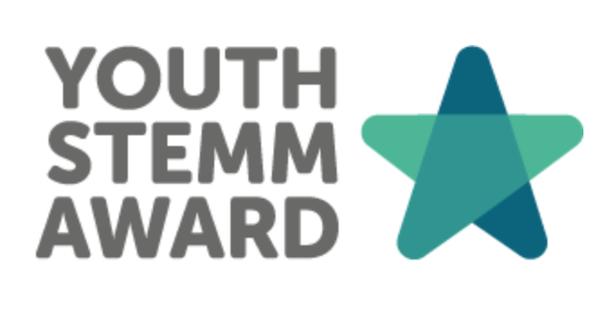

A G E 7
P
(GENERAL)PhysicsAndMathsTutor (GENERAL)FreeScienceLessons(Youtube) (GCSE)ExamQa(Youtube-SummaryVideosareparticularlyuseful) (GENERAL)SnapRevise(Youtube) (GENERAL)GetRevising (GENERAL-GCSE)Cognito(WebsiteandYoutube) (GCSE&A-LEVEL)Studymind (A-LEVEL)MissEstruch(Youtube) (GCSE&A-LEVEL)Primrose(Youtube)
Chemistry Physics
(GENERAL)PhysicsAndMathsTutor (GENERAL)FreeScienceLessons(Youtube) (GCSE)ExamQa(Youtube-SummaryVideosareparticularlyuseful) (GENERAL)SnapRevise(Youtube) (GENERAL)GetRevising (GENERAL-GCSE)Cognito(WebsiteandYoutube) (GCSE&A-LEVEL)Primrose(Youtube) (A-LEVEL)AlleryChemistry(Youtube) (A-LEVEL)Chemguide
(GENERAL)PhysicsAndMathsTutor (GENERAL)FreeScienceLessons(Youtube) (GCSE)ExamQa(Youtube-SummaryVideosareparticularlyuseful) (GENERAL)SnapRevise(Youtube) (GENERAL)GetRevising (GENERAL-GCSE)Cognito(WebsiteandYoutube) (GCSE&ALEVEL)OnlinePhysics(WebsiteandYoutube) (A-LEVEL)ZPhysics(Youtube) (GCSE)DrDavidBoyce(Youtube)
P
8 R E S O U R C E S
A G E
Biology
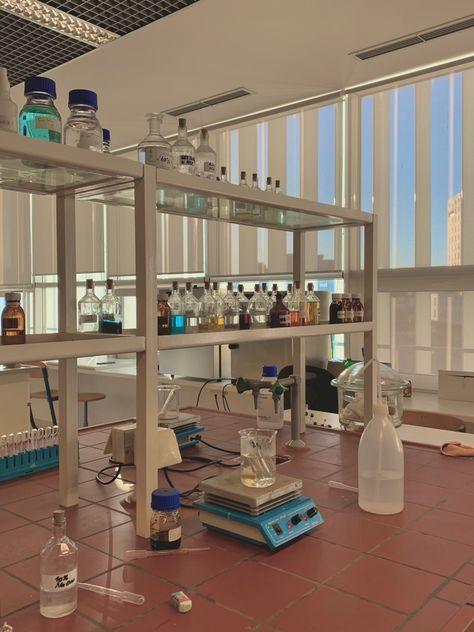

Interviewwith DrDawes
Whatisyourfavouritepartofchemistrytoteach?
Hesaidthatheis‘constantlychanginghismind’,butparticularly‘loves teachingmoles’as‘manystudentsfinditdifficult’,soitissatisfyingforhim asateachertoseewhenstudentscanfinallyunderstandit. Usually, studentsthinktheycan’tdoit,butoncetheylearnitthey‘excel’init. So, teachinglowerfifth/upperfifththemolestopicishisfavourite.
Whatisyourfavouriteelementfromtheperiodictableandwhy?
‘Oxygenbecauseitisresponsibleforalotofinterestingchemistryonour planet’andbecausehefindstheozone‘verybeautifulandinteresting.’
Whatissomethingyouhavereadaboutinchemistry/sciencethatyoufind interesting?
He‘lovescolours,soreadingaboutindigoandsomeofthefamousold dyesandhoworganicchemistrycameaboutbeingrelatedtocolouris veryinteresting.
Itsfascinatingtoseebreakthroughthroughcolours.Naturaldyeswere veryexpensive,so, figuringouthowtomakevibrantcolourstransformed thefabricindustry.’
Ifyouweretogotoadesertisland,whatobjectwouldyoubring?

‘Somesortofsolarpowergeneratortogetelectricityandsotakealaptop toreadbooksandlistentomusic.’However,ifthatisnotallowedanditis assumedthatnoelectricityisavailable,thenphysicalbookstokeephim entertained.
Whoisonechemist/scientistwhoseworkyoureallylikeorwhoinspires you?
DorothyHodgkinwhowontheNobelprizeforchemistry-shewasoneof fewwomentodoso-andoneofthemostfamousBritishfemalechemists ofalltime).
She isresponsiblefordiscoveringthestructureofpenicillin.
DrDawes’tutoratuniversityhadherasaphDsupervisor,sothatwas specialtohimbecausehesawthewayhistutorrespectedherandsohe alsorespectedHodgkininasimilarway.
PAGE9
ALUMINIUM

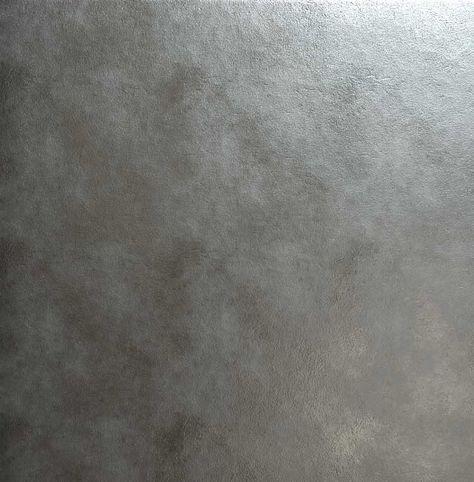



PAGE10
TamaraHanouz
HanaPerjuci
a n d
t
e n
h e D e v e l o p m
T
C h e m i s t r y o f t h e G l o w s t i c k
Weallknowthataglowstickissupereasytousesinceallyouhavetodoisbendthe plasticbatonuntilitsnapsanditimmediatelygivesoffa‘glowinthedark’light. However,inthisshortamountoftime,severalchemicals,whicharekeptapartuntil thebatonissnapped,reacttogethertogiveoffthislight.
Theouterplastictubeoftheglowstickholdsasolutionofanoxalateesterandan electron-abundantdye,aswellasaglassthatisfilledwithahydrogenperoxide solution.Whentheglowstickissnapped,theglasstubeisbrokenandthehydrogen peroxide,whichstartsthereaction,isreleased.Atfirst,thehydrogenperoxidereacts withtheoxalateestertoproduceahigh-energyintermediate,however,thenatureof thisintermediatehasbeenamysteryformanyyears.Althoughthereisnotenough evidencetoprovethis,manychemistssurmisethattheintermediateisthemolecule 1,2-dioxetanedione.
Thishigh-energyintermediateisagoodelectron-acceptorasittakesanelectron fromthedyeandbreaksitdownintoCO2andanegativelychargedCO2radical anion.Thisthenturnsintoapositivelychargedradicalcationandthedyetakesback anelectronfromtheradical,makingthedyegainexcessenergy.Thisenergyisused bythemoleculetofirstmoveintoanexcitedstateandthenmovebackdownand emittheenergyasaphotonoflight,whichmakestheglowstickglow.
ThechemistrybehindtheglowstickwasdiscoveredinNewJerseyin1962by EdwinA.Chandrosswhohadbeenmeddlingwithlight-producingchemical reactionsafterreceivinghisPhD.Heexposedaxanthinederivativewithoxalyl chloridetohydrogenperoxidewithalittleanthracenedye,whichproducedaweak light.Bydoingso,hediscoveredthatitwastheleftoveroxalylchloridereactingwith thehydrogenperoxideanddyetocreatethelight.
Sincethefirstdiscoveryin1962,manychemicalinnovationshavebeenmade revolvingaroundthesafetyofaglowstick.CyalumeTechnologies,aUScompany, resortedtotrichlorsalicylateoxalateesters,whicharesaferthantheoxalateesters thatwereoriginallyusedinglowsticksandwhichproducedtrichlorophenols, chemicalsthatcouldformtoxichalogenateddioxins.Throughouttheyears, chemistshavealsoexperimentedwithdifferentdyesandhavediscoveredthebest chemicalstouseinmodernglowstickstoformdifferentcolours:
RhodamineB-radiantred 9,10-bis(phenylethynyl)anthracene-green 9,10-diphenylanthracene-blue


PAGE11
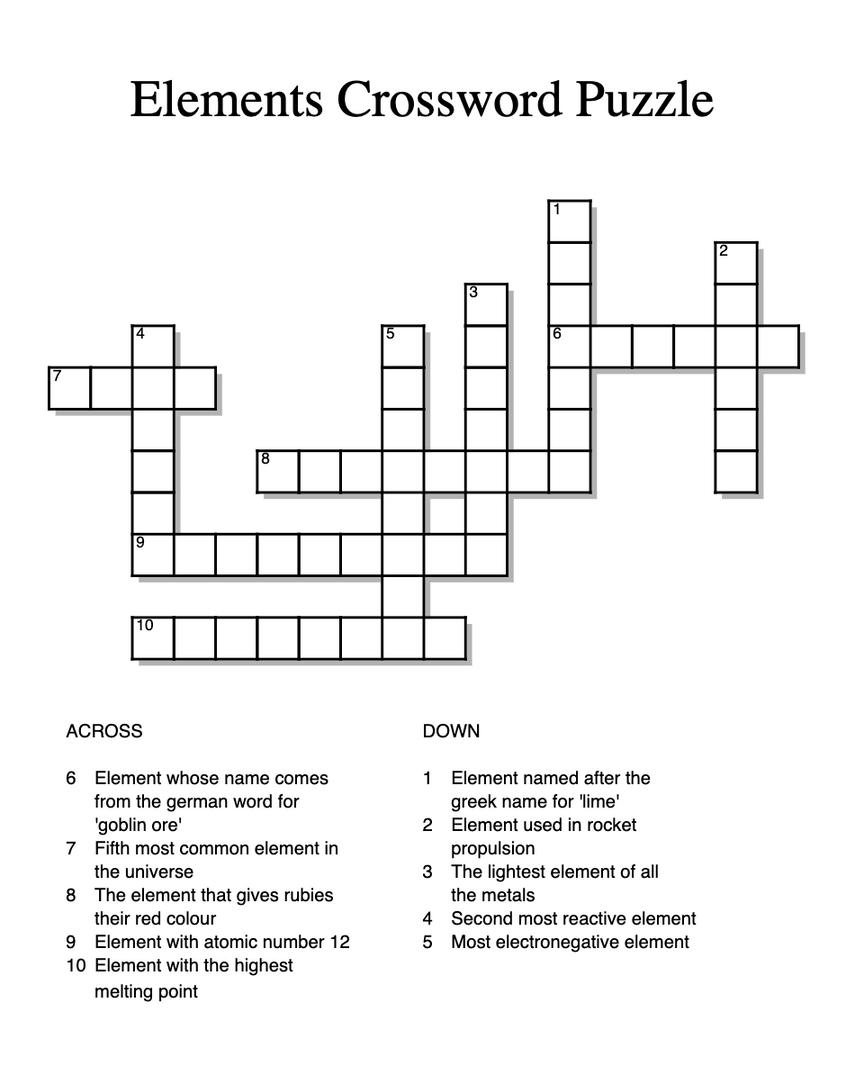
PAGE12
Fun ScienceFacts
Lightningstrikesproduceozonewhichiswhatproducesthesmell afterlightningstorms.
Oneinchofrainisequalto10inchesofsnow.
Thehydrogenatomsinourbodiesaremostlikely13.5billionyearsoldbecausethey werecreatedatthebirthoftheuniverse.
Someanimalssuchaslobstersand octopuseshavebluebloodbecausetheir bloodcontainscopperwhichturnsblue whenitisoxidised.
Themostexpensiveelementis californiumanditcancostupto $2.7billionpergram.
Heliumislighterthanai r

Saturncanfloatonwater justlikeice.
Youcancreateparticlesofmatter usinglight.
Timegoesfasteratthetop ofabuilding.
Theonlypartofthebodythathasno bloodisthecorneaoftheeye.Itreceives oxygendirectlyfromtheair.
Jistheonlyletter tonotbe representedin theperiodic table.
Animalscanexperiencetime differentlyfromhumans.The worldmovessloweraround smalleranimalscomparedto humans.Thisisbecause perceptionoftimedepends onhowquicklythebraincan processincoming information.
Inthehumanbody,thereisenoughcarbon tosupplytheleadforabout9000pencils.
PAGE13
.



TheSearchfor TheSearchfor DaisySpencerNairn
Life on Europa Life on Europa
DidyouknowthatyoucanseeJupiter’smoonsfromjustthe roofoftheScienceCentre?Ididn’tknowthatuntilDrBoyce tookusoutonenightduringAstronomyClubandpointedout allthestarsandconstellations.
DidyoualsoknowthatEuropa,Jupiter’sfourthbiggestmoon holdsalotofinterestamongastrobiologists,duetoitspotential toholdlife?Althoughitsoceansarecoveredbyathicklayerof ice,probably10to15miles(15to25km)thick,underneathis thoughttobeahuge,salty,liquidocean.
Europahasalreadybeenstudiedbysixspacecraftssincethe 1970s.Pioneer10and11,Voyager1and2,andtheGalileo spacecraftallhavevisitedtheJupitersystem.NASA’sGalileo spacecraftconductedmultipleflybysofEuropainthe1990s andearly2000s.Itcamebackwiththefirstevidenceofaliquid oceanwhichwasconfirmedwhenafewyearslatertheHubble SpaceTelescopedetectedplumesofwatervapourerupting frombetweentheice.
Around50to80%oflifeonEarthisfoundintheocean.Notonly plantsandcoralsandfishandmammalsbutalsoextremophiles –organismsthatcansurviveinextremeconditions.Soitis possiblethatthistypeoflifecouldalsosurviveonEuropa.Ifits surfaceisfoundtohavehydrothermalvents,likethosefirst foundonEarthin1977ontheGalapagosRift,theymaybe supplyingchemicalnutrientstosupportlifeonEuropatoo.


PAGE14
WhyDoWe ExploreSpace?
Theanswerto'whydoweexplorespace'willdifferbetweeneras-itisnecessarytofufillhumancuriosityandtoadvance ourownknowledgeasaspecies.Ourfascinationwithspacehasbeenevidentsincethefirstdevelopmentofourcognitive abilities. Thiscuriositywithspaceleadsustocontinuetoexploreandsearchforpotentialsolutionstoproblemsthatweas aspeciesfaceonEarthanddevelopanswersforquestionsweaskabouttheuniverseweinhabit.
Ourfirstadvancementtowardsspaceasanexplorationtookplacein1957, butourcuriositytoexploreandexpandour territoryisfundamentalwithinthehumanspecies:weare,bynature,explorers. Humanshavealwaysbeenfascinated withtheideaofspace.Manyofthefirstreligionsandgeneralbeliefsinsocietycamefromspace.Planetswereoften thoughttobedeities,evenduringtheStoneandBronzeagesobservationsofthenightskywerethesubjectofworship. TheRoman'sbecameincreasinglyfascinatedwithastronomy-theircalendar,asanexample,wasthoughtto havebeen anobservationallunarcalendar.Humanshavebeendriven,forthousandsofyearsacrossanumberofcivilisations,to exploretheunfamiliar.Byexploringspace,wesatisfyourcollectivedesireforanswerstotheunknown.Wepursue answersforself-preservation,tobecomelessignorantofoursurroundingsandtolearnaboutourroleintheuniverse.Our pursuitintospace,amongotherareasoftheunknown,separateusfromanimals,whichremainessentiallyunchanged. Evolutionpushesustocontinueourhungerforknowledge-ifthereisthepossibilityexpandourownscientificand technologicalknowledgeandthusimprovethelivesofthoseonEarth,wewillexplorespace.Likewise,itcanbesaidthat ourfascinationwithspace,andinturntheunknown,alsostemsfromourinnatefearoftheunknown.Ancientcavemen didnotfearthepredatorsthattheyalreadyhadknowledgeof-theyunderstoodhowtoapproachtheanimal,howto defendthemselvesfromit,whetherornottoavoidit-butinsteadthosethattheyhadneverseenpreviously.Theoutcome ofthecontactisunclearandsoinsteadofapproachingthenewpredatoritcouldbesafertorunawayfromthepossibility ofdangerandprotectthemselves.However,withoutanyattempttofamiliarizeourselveswithwhatwedon'tknow,we depriveourselvesfromanypotentialbenefitsthatwecouldgain.Manywouldarguethatvastamountthatweare completelyunawareofregardingspacemakesitviableenoughtoexplore,despitethepossibilityofdangertoourselves. Theparadoxofourfearandfascinationoftheunknownisfundamentaltoourgeneticcomposition.Ourdesiretoexplore cannotbeignored.
Onarelatednote,thereisalsomathematicalreasoningtosupportexplorationinspace.Throughoutthecourseofthe Earth'shistory,thusfar,99.999percentofallspecieshavegoneextinct. Additionally,ithasbeensuggestedbyanumber ofsourcesthatweareundergoingthesixthmassextinction.WeknowthatresourcesonourEartharedecreasingata significantlyincreasingrateasourpopulationincreases.Ouronlyviablesolutionistoexplorespacetoessentiallysaveus fromourselvesanddetermineifwehaveafutureatall.Fromourobservations,weareallawarethatspaceisaviolent place;itisthenreasonabletosuggestthatweexplorespaceinordertoavoidbeingdestroyedbyit.NASAclaimsthat approximatelyevery10,000yearsanasteroidthesizeofafootballfieldislikelytocollidewithEarth.Similarly,anasteroid 100metresinsizeishighlyprobabletomakecontactwithEarth,andmoreimportantly,andasteroidcouldeasilyhitEarth duringourinhabitancy.Therefore,itisvitalthatwecontinuetodeveloptechnologyand groupsliketheNASA'sDouble RedirectionTestinplaceinordertoprotectusasaspecies.Biologicallyitisnecessarythatweprotectourselves, especiallyinthelongterm.
WelcometothefirsteditionoftheUppinghamScienceMagazine!Weare excitedtosharewithyouadiverserangeoftopicswehavedelvedintothis year,coveringeverythingfromCRISPRtotheexplorationofspace.We hopeyouwillbeabletofindsomethingthatinterestsyouandencourages youtodelvedeeperintotheworldofSTEM.


PAGE15
SummerJones
Interviewwith MrsEllis Interviewwith MrsEllis
Whatmadeyouwanttoteachphysicsoveranyothersubject?
“Idon’tremembereverconsideringteachingadifferentsubject, althoughIhavesometimesthoughtIwouldenjoyteachingMaths.By thetimeIdecidedIwantedtoteach,Iwasalreadyhalfwaythrough myPhysicsdegree,andIoriginallychosePhysicsoverChemistry becauseIwasn’treadytogiveupstudyingasubjectthattaughtme somuchabouthowtheUniverseworks.”
Whatdoyouthinkisthemostimportantphysicsdiscoveryoverthe last5years?
“IhavebeenexcitedtoseethenewimagesfromtheJamesWebb SpaceTelescopewhicharemakingPhysicistsasklotsofquestions, andIhopethiswillleadtosomeexcitingdiscoveries.TheArtemis missionstoreturntoTheMoonarenotthemselvesadiscovery,butI hopethattheywillinspireandenthuseanewgenerationof scientists.”
Doyouhaveafavouritephysicspractical?
“It’smoreoftenademonstrationthanapractical,butmycurrent favouriteismakingaspeakeroutofastripofkitchenfoil-itfeelslike magicevenwhenyouunderstandhowitworks!”
DoyouthinkAIwillbemoreofabenefitorproblemforusinthe future?
“Ithinkitwillbeabenefit,butIthinkwehaveahugeamounttolearn toensurethatweuseitfortaskswhereitreallyisbetterthanthe humanalternative,ratherthanjustusingitbecausewecan.”
Ifyoucouldpickupanewskillinaninstant,whatwoulditbeand why?
“Iwouldlovetobeabletoplaythepiano.Iusedto,butneververywell andIdon’tthinkIcanremembermuch!”
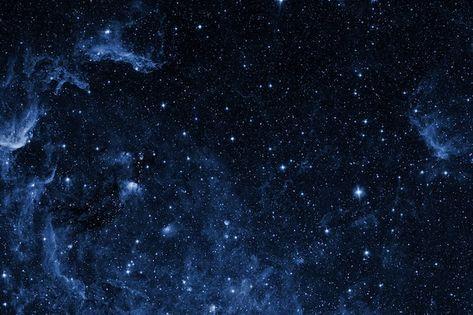
PAGE16
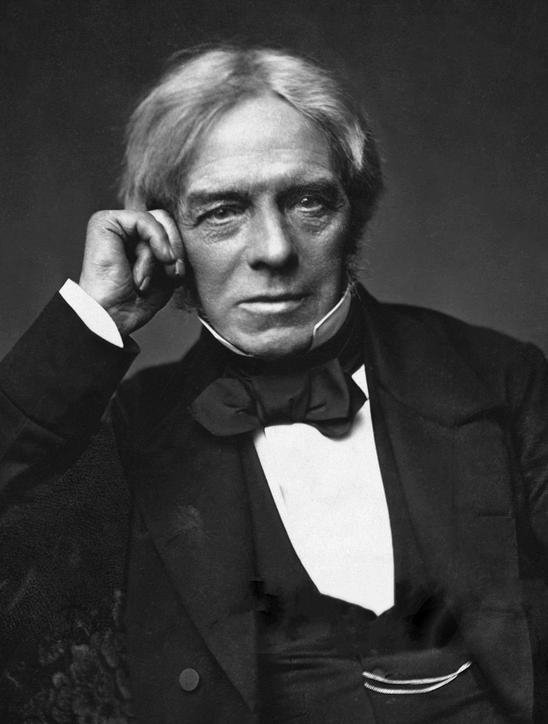
M i c h a e l F a r a d a y
MichaelFaradaybecameonethegreatestphysicistsofthe19thcentury.Hefirstbeganhisscientificcareerasachemist, movingtophysicswherehisinventionsinelectricitychangedtheworldforever.
Faraday’schildhoodwasnotonefilledwithgreatness.BornonSeptember22,1791inSurrey,England,hewasoneoffour children,allofwhomstruggledtogetenoughtoeat.HereceivedonlyaverybasiceducationinaSundayschoolthat taughthimtoread,write,andcipher.Afterearningmoneybydeliveringnewspapersforabookdealerandbookbinder,he wasapprenticedtotheman,takingtheopportunitytoreadthebooksheworkedon.Fromit,Faradaydiscoveredhis passionforelectricityfromtheEncyclopaediaBritannicawherehepractisedsimpleexperimentsinelectrochemistry.
ThisinterestinexperimentationledhimattendthechemicallecturesofSirHumphryDavyattheRoyalInstitutionofGreat BritaininLondon.Afterwritingnotesforthelectures,hesentthemtoDavyinthehopesofreceivingemployment.In1812 FaradayjoinedDavyashisassistant.
Faraday'smostsignificantcontributionscameinthefieldofelectromagnetism.In1820,afterHansChristianOrsted’s discoverythatanelectriccurrentthroughawireproducedamagneticfield,Faradaywasthefirsttosuccessfullyinducea currentbychangingamagneticfieldin1831.Thisdiscoverylaidthefoundationforthedevelopmentofelectricgenerators andtransformers,revolutionizingthefieldofelectricalengineering.Hespenttherestofthedecadeworkingand developinghisideasaboutelectricity.Heformulatedthelawsofelectrolysis,whichdescribetherelationshipbetweenthe amountofsubstanceproducedatanelectrodeduringelectrolysisandthequantityofelectricitypassedthroughthe electrolyte.Theselawsbecamefundamentalprinciplesinthefieldofelectrochemistry.
Faraday'sresearchextendedtovariousotherareasofscience,includingoptics,chemistry,andthenatureoflight.Hiswork ondiamagnetism,electrolysis,andthemagneto-opticaleffectearnedhimwidespreadacclaimandnumerousaccolades.
MichaelFaradaypassedawayonAugust25,1867,atHamptonCourt.Despitelackingformalmathematicaltraining, Faraday'skeeninsightsandgeniusexperimentalmethodsestablishedhimasoneofthemostinfluentialscientistsofhis time.
PAGE17
PAGE18


Thisisanexperimentwe carriedoutinLeighton Groupalongwitha‘floating bubbleexperiment.’The dryicefogexperimentis bestexplainedbyawebsite calledBen’sDryIce-“Dry icefogiscreatedwhenyou placedryiceintowarmor hotwater.Thiswhitefogis condensedwatervapor, mixedwiththeinvisible carbondioxidereleaseas partofsublimation,whichis theprocesswhendryice goesfromasolidstatetoa gas.“. Tofindmore informationaboutthis experimentandother experimentsinvolvingice, havealookat‘GoExperi’on youtube.
DryIceFogExperiment

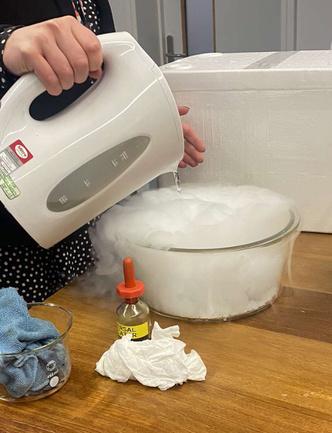
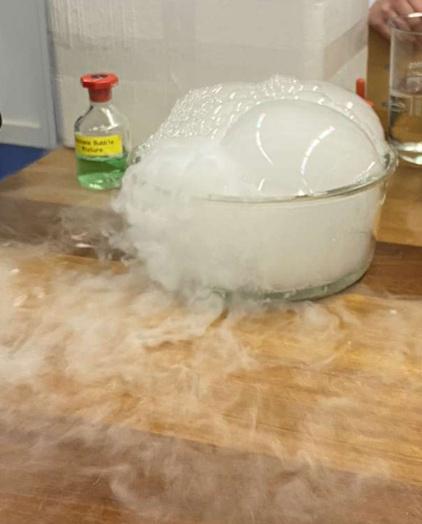

LinusPauling
PAGE19
Linus Pauling, born on February 28, 1901, was an American theoretical and physical chemist, who is well-known for researchingthenatureofachemicalbondandforbeingtheonlypersontohavewontwounsharedNobelPrizes.
He was the son of Herman Pauling and Lucy Pauling, who were both pharmacists, and he attended Oregon Agricultural College where he received his Bachelor of Science degree in chemical engineering in 1922. After that, he attended the California Institute of Technology, during which he received his PhD in 1925, for a dissertation derived from his crystalstructurepapers.Soonafter,hewentontostudyquantummechanicsatArnoldSommerfeld’sInstituteofTheoreticalPhysics inMunich,Germany,afterhavingreceivedaGuggenheimFellowshiptostudyinEurope.
He returned to CalTech in 1927 and focused his scientific work on analysing chemical structures. In 1930, he learned about electron diffraction and used this to determine the structures of important substances. Using this structural knowledge, he developedanelectronegativityscale,whereheassignednumbersforhowwellaparticularatom’spowercanattractelectrons inacovalentbond.Heusedhisstudiesofquantummechanicsasatheoreticaltoolanddeterminedthestrengthofeachofthe four bonds surrounding a carbon atom. In the late 1920s, he gained an interest in biological molecules and performed successfulmagneticstudiesonhemoglobinandevenpublishedapaperongeneralproteinstructurein1936.
Pauling later visited New York, where he met Karl Landsteiner, the discoverer of blood types. Being amazed by his works, Pauling went on to develop a theory about specificity through a unique folding of the antibody’s polypeptide chain. J. Robert OppenheimerevenaskedPaulingtoleadthechemistrysectionoftheManhattanProject,however,Paulinghadtodeclinedue tohissufferingfromglomerulonephritis.AfterWWII,Paulingbecameinterestedinthestudyofsickle-cellanemiaandrealised thatthesicklingofcellsmightbecausedbyageneticmutationintheglobinpartofhemoglobin.
In 1948, Pauling returned to looking at the three-dimensional structure of proteins. In early 1953, he and crystallographer Robert Corey published their version of DNA’s structure, three strands twisted around each other in a ropelike fashion. However, soon after the DNA’s correct structure, a double helix, was published by James Watson and Francis Crick. Nevertheless,PaulingwasawardedaNobelPrizeforChemistryin1954forhisstructureintothenatureofachemicalbond.
In the 1950s, Pauling and his wife were well-known for their attempts to stop the atmospheric testing of nuclear weapons. They presented an appeal for a test ban to the UN in 1958 in the form of a document signed by over 9000 scientists from 44 countries. His work was acknowledged with a Nobel Prize for Peace in 1962, however, he was awarded this on October 10, 1963,whentheNuclearTestBanTreatywentintoeffect.
In his later years, Pauling continued to receive recognition for his earlier works, however, some of his later developments sparkedcontroversy.
AlexanderFleming:ApioneerinMedicineand Antibiotics
Sir Alexander Fleming, born on August 6, 1881, was a renowned Scottish biologist, pharmacologist and botanist.GrowingupinruralScotland,hedevelopedanearlyinterestinnaturalsciences.
He studied medicine at St Mary's Hospital Medical School in London, from which he graduated in 1906. At thisschool,hediscoveredapassionforresearchandacuriosityaboutinfectiousdiseases.
In 1928, he made a groundbreaking discovery that would revolutionize medicine. While working at St Mary's, he began conducting experiments on Staphylococcus bacteria. After returning from a two-week vacation, he noticed that some of his Petri dishes were contaminated with mold. Instead of immediately discardingthedishes,hetookacloserlookandfoundthatbacteriasurroundingthemoldhadbeenkilledformingaclearzone.ThismoldwasidentifiedasbelongingtothePenicilliumgenusandfoundtoproducea substance that could kill a wide range of bacteria. This chance observation marked the birth of penicillin, theworld'sfirstwidelyusedantibiotic.
Fleming's discovery of penicillin, and work by other scientists to develop it into a practical antibiotic,, revolutionizedthefieldofmedicine.Itprovedtobeapowerfultoolintreatingbacterialinfectionandsaved countless lives, especially in World War II. Fleming's contribution laid the foundation for the antibiotic era, transformingthewayinfectionsweretreatedandsignificantlyimprovingpublichealth.
In recognition of his invaluable contribution to science and medicine, he received numerous honours, including the Nobel Prize in Medicine in 1945, which he also shared with Howard Florey and Ernst Boris Chain,whoplayedkeyrolesinpenicillin'sdevelopment.
Although antibiotics have played a pivotal role in treating a wide array of bacterial infections, from minor ailments to life-threatening diseases, the misuse and overuse of antibiotics throughout the past decades has led to a rise in antibiotic resistance. Widespread misuse of antibiotics has accelerated the natural selectionofresistantstrains,leadingtotheemergenceofresistantbacteriathatbecomeuntreatable,which iswhywemustaddressthisissuethroughresponsibleantibioticuseandspreadingawareness.

P A G E 2 0
Reading Reccomendations
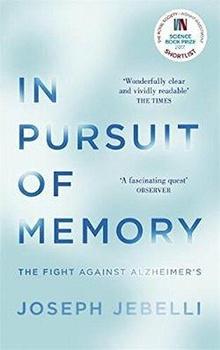
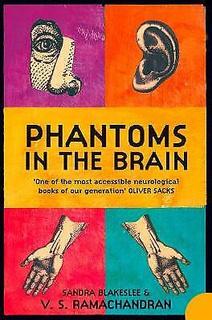
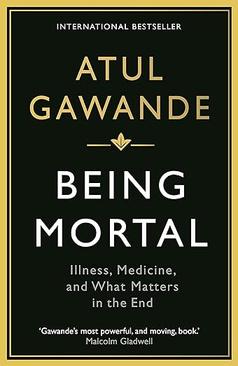
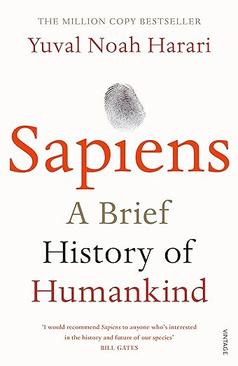
SapiensABriefHistoryofHumanKindYuvalNoahHarari
WhenBreathBecomesAir-PaulKalanithi
PhantomsintheBrain-SandraBlakeslee& V.S. Ramachandran
ThePursuitofMemory-JosephJebelli
ThePeriodicTable:AFieldGuidetothe Elements-PaulParsons&GailDixon
OurNHS:ABriefHistoryofBritain’sMost LovedInstitution-AndrewSeaton
ThePhysicsofSuperheroes-James Kakalios
PhysicsSquared:100ConceptsYouShould Know-GilesSparrow,GrahamSouthorn BeingMortal- AtulGawande
StorminaTeacup:ThePhysicsofEveryday Life-HelenCzersk
P A G E 2 1
EditorinChief:SummerJones
HeadofBiology:AzariahAlmeida
HeadofChemistry: HanaPerjuci
HeadofPhysics:Daisy SpencerNairn

Thank you for reading!
WithSpecialthankstoMrKingwhohelpedusorganise andpublishthemagazine. themagazineteam:
P A G E 2 2
ANSWERS:
CHEM:

BIO: PHELEUMETILEGLY-FLMIG
